Results
-
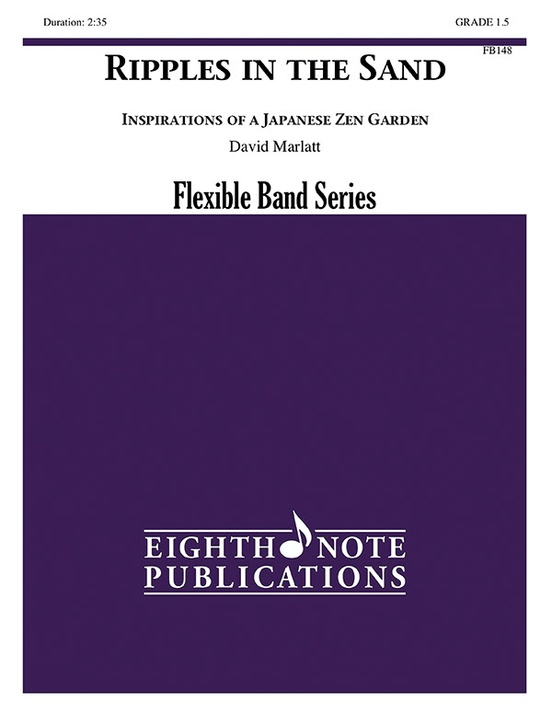 £50.50
£50.50Ripples in the Sand - David Marlatt
provides ultimate flexibility for ensembles with incomplete instrumentation or odd combinations. These pieces are playable by as few as 5 woodwind, brass or string players with or without percussion. This creates the opportunity for a mixed quintet to perform these titles but also allows for performance for 10-15 players up to full a band/orchestra with parts doubling. Great for music camps, contest use or any band room that has non-standard instrumentation. This work is peaceful and reflective and accessible to young musicians. The major pentatonic scale is used as the basis for this composition which creates an interesting texture and evokes the sound of an ancient Japanese folk song. (2:35)
Estimated dispatch 3-5 working days
-
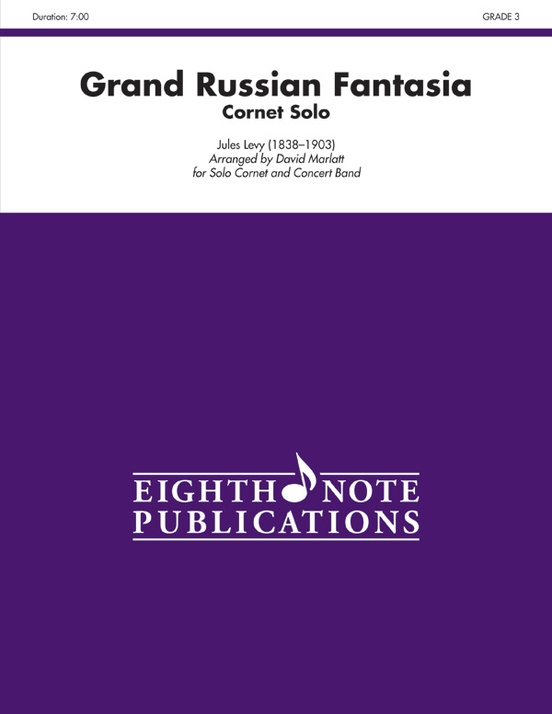 £62.95
£62.95Grand Russian Fantasia - Jules Levy / arr. David Marlatt
This fun light piece is a great technical showpiece for the cornet. This arrangement has new break strains which have been composed (incorporating some of the original material) and use a famous Russian folk song, "Kalinka." These new band parts have breathed new life into this terrific cornet showpiece, giving the band more exciting parts and filling out the sound under the soloist.
Estimated dispatch 3-5 working days
-
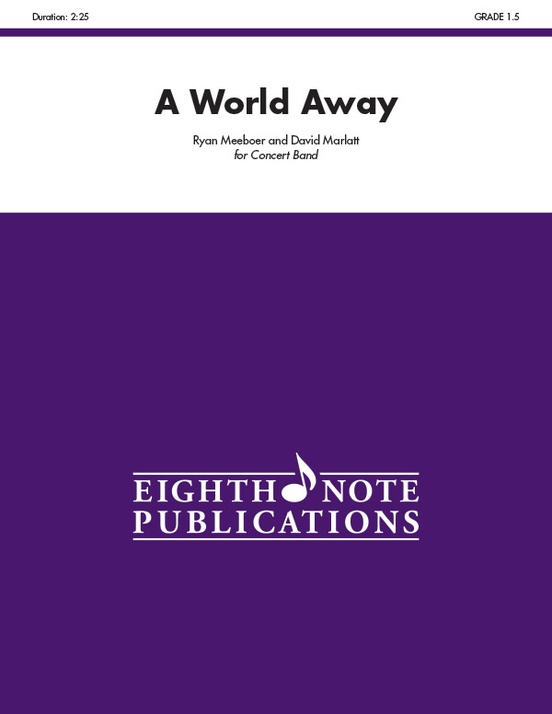 £50.50
£50.50A World Away - Ryan Meeboer and David Marlatt
This piece contains two distinctively different themes---a traditional European folk song sounding melody and a Japanese inspired one. Each melody is introduced on its own, then they are combined---with both themes playing simultaneously! This creates a very effective and beautiful sonority. This piece was written to celebrate the twinning of two cities---one in Canada and the other in Japan. (2:25)
Estimated dispatch 3-5 working days
-
 £115.60
£115.60Hard to Say I'm Sorry - Peter Cetera
"Hard to Say I'm Sorry" is one of the greatest hits by US rock band Chicago. It was the first single record from the "Chicago 16"-album (1982). The song went to no. 1 on the Billboard charts and stayed there for two weeks. Produced by David Foster, the song was given a typical early 80's sound with synthesizers and heavy guitars dominating the sound. The album-version of the song included a part two of the song, "Get Away", a up-tempo song featuring the famous horn-section of the band.
Estimated dispatch 7-14 working days
-
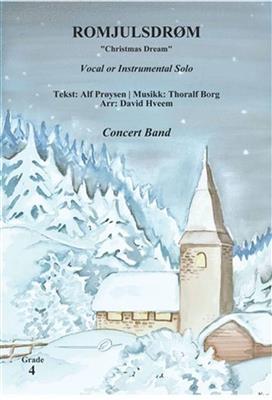 £115.60
£115.60Romjulsdrm - Thoralf Borg
The poem Romjulsdrm ("Christmas Dream") was first published in Arbeiderbladet on January 3rd 1959, and became known when Thoralf Borg set a melody to it in 1968. Up until this, Alf Prysen had used a melody quite similar to the song Lijan uti dalen, when he sang the song in the TV program Ei vise vil jeg synge in 1964. At the same time that Borg's melody was written, the last four lines of text were also added to the poem, and the song took on the form we know today.The form and structure of this arrangement originates from a version for big band and vocals commissioned by stre Toten Storband, written in 2018 for one of their traditional midnight concerts on the day before Christmas. In an attempt to give the arrangement a nice calm and the text a lot of room, as is often the case in songs like this, it ended up in a relatively narrative style where the variation in tempo and the shifts between swing and straight eighth notes are particularly central.The song is about family, friendship and the quiet days of the Christmas holidays, which hopefully is something most people can recognise. The arrangement for the aforementioned midnight concert was ordered because my sister was to be the soloist for the concert, and since my father also played lead trombone - as he has done in this big band for as long as I can remember - it was natural to add a small trombone solo as well. It's always special to write and arrange music for people I know and appreciate, but it's extra special when it's also for two of my great role models.- David Stre Hveem -
Estimated dispatch 7-14 working days
-
£74.99
Volare Wind Band Set (Score & Parts)
In 1958, Domenico Modugno (1928-1994) song Nel blu dipinto di blu (or Volare) was the Italian entry at the Eurovision Song Contest. Modugno did not win the contest (he became third) but the song - a true sing-along - turned out to be a worldwide hit. In the course of decades, Volare has been translated into various languages, and performed by many artists of repute, like The Gipsy Kings, Dean Martin, Louis Armstrong, Petula Clark, and David Bowie. With this catchy arrangement, Lorenzo Bocci has given Volare a wonderfully fitting Concert Band sound. 0:03:45
Estimated dispatch 7-14 working days
-
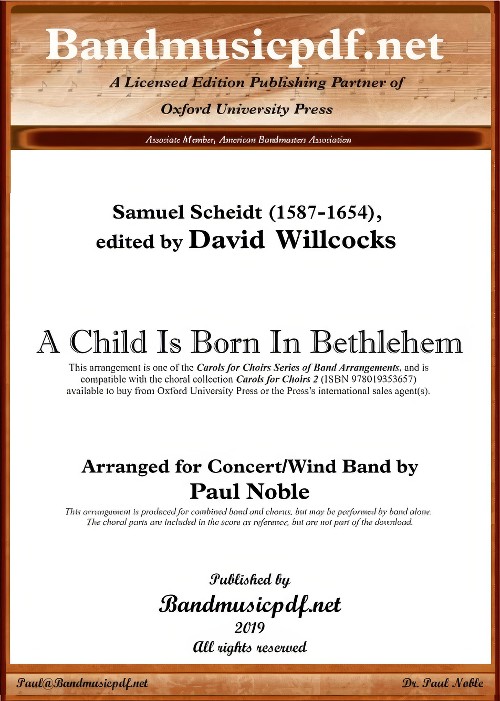 £75.00
£75.00A Child is Born in Bethlehem (Concert Band with Optional Choir - Score and Parts) - Scheidt, Samuel - Noble & Willcocks
Samuel Scheidt (1587 - 1654) was a German composer, organist and teacher of the early Baroque era, and was one of Germany's most distinguished composers at that time, especially in the field of keyboard music. His three volumes of Tabulatura nova (1624) are a monumental compendium of song and dance arrangements, sets of variations, fantasias, toccatas, fugues and liturgical pieces (often plainsong-based) for the Lutheran Mass and Office. Likewise his four books of Geistliche Konzerte illustrate the ways of elaborating a chorale, fusing declamatory ideas with contrapuntal writing. Scheidt was the first internationally significant German composer for the organ, and represents the flowering of the new north German style, which occurred largely as a result of the Protestant Reformation. Scheidt's music is in two principal categories: instrumental music, including a large amount of keyboard music, mostly for organ; and sacred vocal music, some of which is a cappella and some of which uses a basso continuo or other instrumental accompaniment. Edited for double chorus by David Willcocks, this arrangement represents one in the Series of Band Arrangements compatible with David Willcocks' Carols for Choirs.
Estimated dispatch 7-14 working days
-
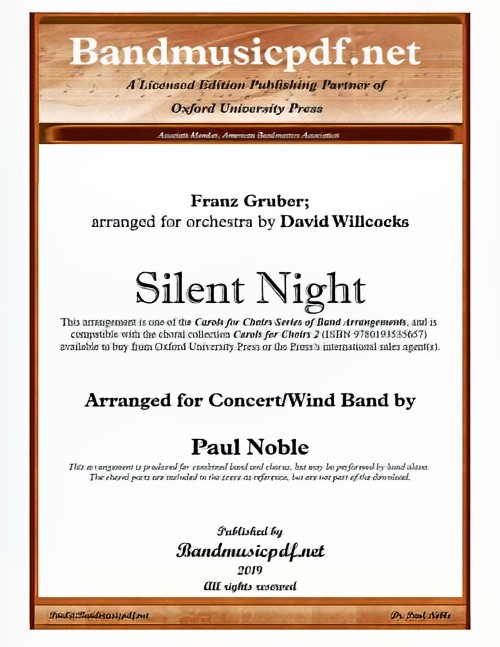 £75.00
£75.00Silent Night (Concert Band with Optional Choir - Score and Parts) - Gruber, Franz - Noble & Willcocks
Silent Night (German: Stille Nacht, heilige Nacht) is a popular Christmas carol, composed in 1818 by Franz Xaver Gruber to lyrics by Joseph Mohr in the small town of Oberndorf bei Salzburg, Austria. It was declared an intangible cultural heritage by UNESCO in 2011. Over the years, because the original manuscript had been lost, Mohr's name was forgotten and although Gruber was known to be the composer, many people assumed the melody was composed by a famous composer, and it was variously attributed to Haydn, Mozart, or Beethoven. However, a manuscript was discovered in 1995 in Mohr's handwriting and dated by researchers as c. 1820. It states that Mohr wrote the words in 1816 when he was assigned to a pilgrim church in Mariapfarr, Austria, and shows that the music was composed by Gruber in 1818. This is the earliest manuscript that exists and the only one in Mohr's handwriting. The song has been recorded by a large number of singers across many music genres. This haunting setting by David Willcocks also includes slight textual alterations to the piece that has been translated into about 140 languages. This arrangement represents one in the Series of Band Arrangements compatible with David Willcocks' Carols for Choirs.
Estimated dispatch 7-14 working days
-
 £75.00
£75.00Noel Nouvelet (Concert Band with Optional Choir - Score and Parts) - Noble & Rutter
Nol Nouvelet is a traditional French carol that dates from the late 15th century and the early 16th century. The song was long ago translated into English as Sing We Now of Christmas. The word nouvelet has the same root as Nol, both stemming from the word for news and newness. Nol Nouvelet literally means Christmas comes anew, Some sources say it was a New Year's song. But others point out that the lyrics all speak of the news of the birth of the Christ child in Bethlehem, the announcement by angels to the shepherds in the fields, looking forward to the visit of the Three Kings and the presentation of their gifts to the Holy Family. This arrangement represents one in the Series of Band Arrangements compatible with David Willcocks' Carols for Choirs.
Estimated dispatch 7-14 working days
-
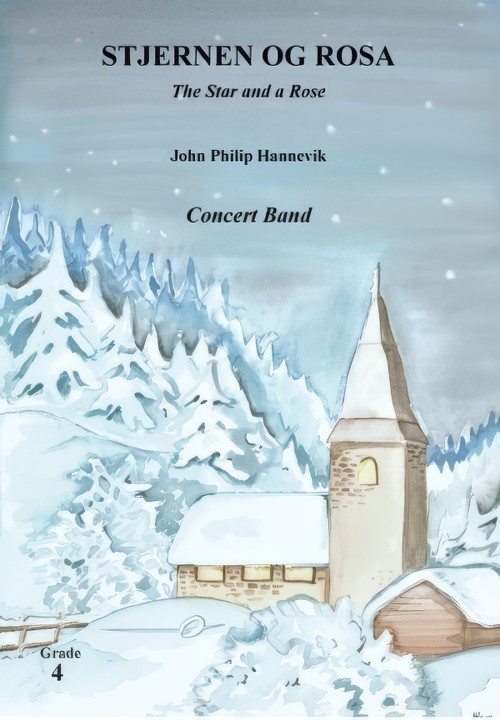 £122.20
£122.20Stjernen og Rosa (The Star and a Rose) (Concert Band - Score and Parts) - Hannevik, John Philip
The Star and a Rose is a big-scale Christmas piece for band, featuring four seasonal chorales.The first is a Gregorian-like chant Hodie Christus natus est.In this section of the piece, a soloist can be placed away from the band, maybe on a gallery. The soloist can be a tenor instrument, maybe trombone, or you can feature a vocal soloist. After this, the music leads us on to the old German Christmas chorale Lo, how a rose e'er blooming. This song is given a fairly rhythmical treatment, but make sure that the melody is presented in a cantabile style. An interlude follows, before the piece presents one of the most used and loved Scandinavian Christmas chorales, Mitt hjerte alltid vanker (My Heart will always wander), composed by the Danish bishop Hans Adolph Brorson around 1732. This song is building towards a climax, before the solo horn brings it all down to the Stable view described in the lyrics. Then comes a transition that brings us in to the final section of the piece, which presents the international Christmas Carol Adeste Fideles. As many will notice, I have borrowed a section from David Wilcocks majestic harmonization towards the end.The title of the piece has its background form the lyrics in My heart will always wander, where the text speaks about the stars in the sky. But also in the Latin text for Adeste Fideles: Stella duce, Magi, Christum adorantes. The Rose is of course from the lyrics in the chorale Lo, how a Rose.Duration: 10.30
Estimated dispatch 7-14 working days
